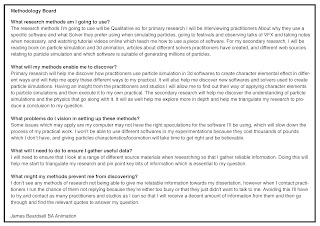Continuing with smoke simulations I've tried to create a character element in the animation using the particles. I created this using 3d containers, fluid systems and nParticles in Maya, however I used the new Arnold renderer in maya to render out the animation but using this means that I can't batch render it without it leaving water marks on the screen. I avoided this by using the render sequence renderer in maya but I don't think that it rendered the full simulation because you can still see the particles flying through the scene.
In one way this shows how the particles work in the simulation and see what the particles are doing and how they react to one another in the simulation.
For this simulation I'm using maya so the solver for this simulation is the FLIP solver, which is great at small to medium fluid simulations because particles are able to flow on top of each other without destabilizing and flying off every where.
For the character element in the simulation I wanted the particles to seem like they are trapped in box and they are trying it escape by crashing into the walls of the box. I wanted to create the feel like the particles were going to suffocate due to the smoke trail it leaves building up in the box. Doing this gives the audience some emotional connection to the particles because the audience worries about the particles.
However I will be re-rendering this simulation out again using Mentalray so that it won't leave water marks, and so that it will render out fully and get more effect out of the simulation. Below is a frame of what a proper rendered out version should look like. (sorry that the image is a bit dark)





